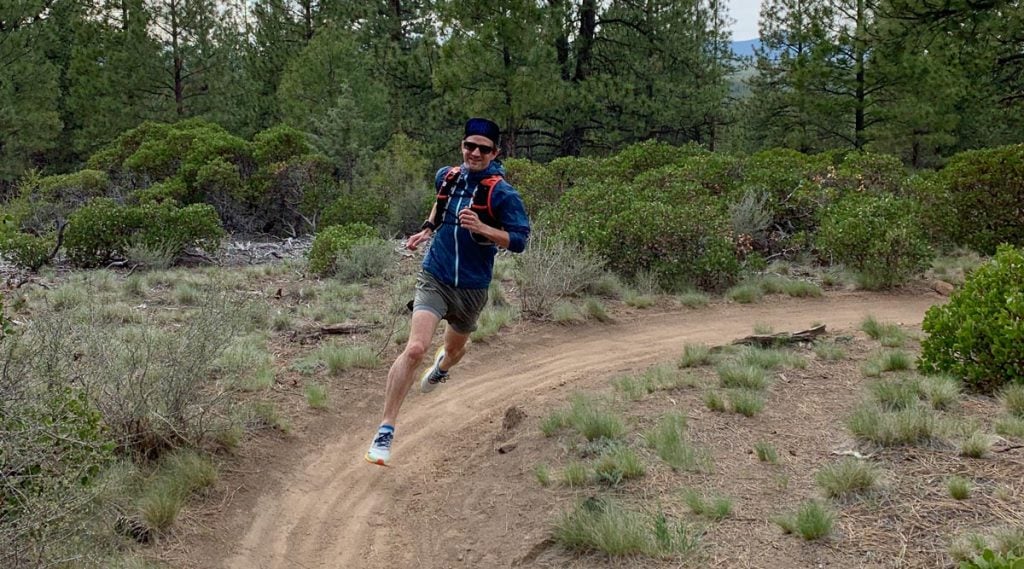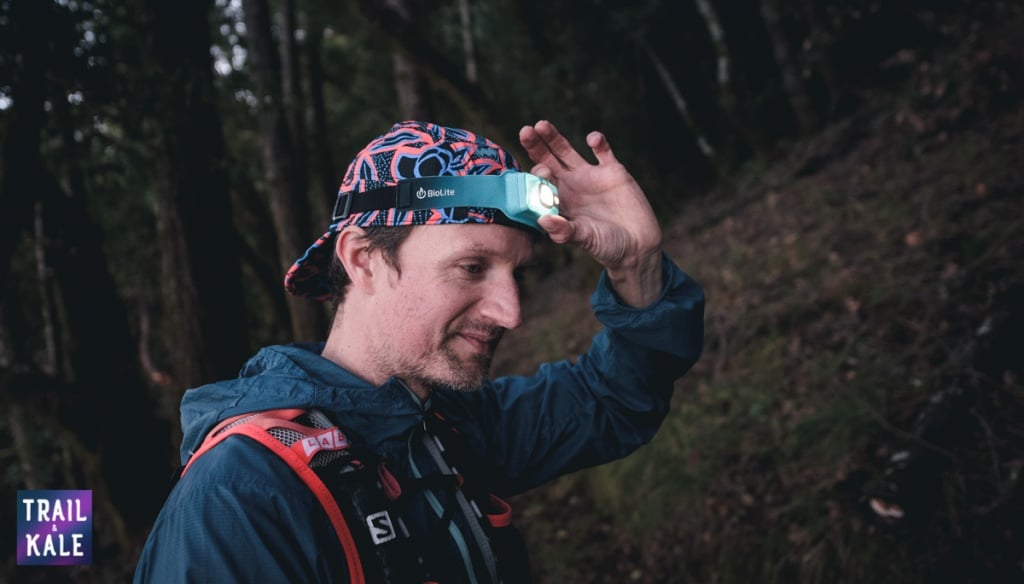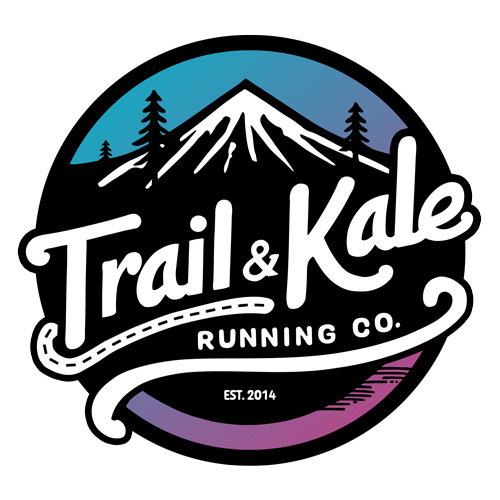Many people like the idea of trail running but are put off because they are concerned that they may be more likely to trip and fall over trail running than running on roads or choosing a different sport altogether.
In reality, you may not necessarily be at significant risk of falling over when trail running, especially if you take certain steps to reduce the risk by ensuring you are appropriate prepared and trained for running on your chosen trail.
In this post we cover the reasons you may fall over trail running (or falling when running anywhere – even on pavement!), and provide advice on how to stop tripping when running, and how to avoid falling over on trails.
Reasons you may fall over when trail running
Here are some of the most common reasons why you may fall over while trail running:
- You trip by catching your foot (usually your toe) on an obstacle such as a rock or tree root… or you do something spectacular such as kicking and tripping over your other leg 🙂
- The ground underfoot is slippery or loose and your foot moves underneath you
- You land badly (usually, heavily) on uneven ground and twist your ankle or knee
- You lose focus and don’t look where you are going
- An obstacle (such as a rock or branch) snags a part of your body or clothing
How often do trail runners fall over
Well, the answer to this is very much it depends. It depends on the person and the type of trails they run, and how clumsy/skilled they are as runners, how much they’re pushing themselves, and how tired they get during their run.
If you know or meet an ultrarunner who is used to running miles at a time, some of which in the dark or in bad weather conditions when they’re tired from already running for hours, then yep, they are highly likely to be very familiar with falling over when trail running.
It’s par for the course, as one might say.
All that said, your risk of falling over can be greatly reduced by following the advice below.
Avoid falling over on trails: 6 ways to reduce your chance of falling when running
The following tips really helped me to reduce my chance of falling over when running on trails, as well as running in general.
That’s not to say I don’t fall over, but I don’t do it as often as I used to, and when I do, it’s usually not as serious as it could have been (see below for tips on ‘how to fall over when trail running’!).
1. Improve your focus and concentration
The Number 1 reason for falling over trail running: insufficient focus and concentration. Always scan for obstacles, focus on what you’re doing, and plan your future footsteps a few steps ahead.
Even now, if I trip, it’s usually because I am thinking of something other than the act of trail running, such as what is for dinner, or looking up to say hi to another trail user.
2. Wear appropriate trail running shoes
To reduce your chance of slipping over, losing grip or tripping, make sure you are wearing trail running shoes that have the right fit, support and traction for the terrain you are running on.
[For advice on what shoes to wear trail running, read our Ultimate Buyer’s Guide to Trail Running Shoes.]
3. Keep tiredness, dehydration, and hunger at bay
If you’re tired when running, then your form is probably going to be less than optimal. This means that you may be leaning / slouching, and not holding a stable core – which can affect your center of gravity and balance.
You may also not be lifting your legs high enough off the ground to clear obstacles, so could be more prone to tripping over on the trail.
Thirdly, if you are mentally tired as well as physically, you may not make the best choices when considering how long to stride, where to plant your feet, and how quickly to try and move – all of which can mean you may end up tripping over!
As a short-term fix for tiredness when running, make sure you have sufficient food and water with you, to help given you that hydration and energy boost to last you to the end of your run and reduce your chances of falling over.
Also try to ensure you breath deeply to get as much oxygen into your body as efficiently as possible. For more on how to do this, read our post on how to breathe while running.
Read ‘the best real food for trail running‘ for some ideas for how to fuel your runs.
We have also advice on how to improve your running form and reduce your risk of overuse injuries from running in this post: 5 ways to improve running form.
4. Increase your cadence, take shorter strides, and pick up your feet
If you’re coming to trail running from road running then you may need to change how you think about cadence and stride length and running form for that matter.
Bad running form can bring on a whole wealth of running injuries including one of the most common ones of why you may get back pain when running.
An efficient running cadence is generally the same wherever you’re running – you’re aiming for around 180 footsteps (90 on each side) in a minute. It’s easy to keep track of cadence with a good GPS running watch.
This may seem like a lot, however what this should mean is that you’re doing more, shorter footsteps on your trail run.
This increases your ability to keep your center of gravity above the foot that is on the ground, and therefore reduce your chance of losing balance or slipping when running on uneven and potentially slippery trail terrain.
You should also be reminding your self every so often to lift your feet up high during strides so that you don’t accidentally kick a sneaky rock or root.
5. Be extra careful when pushing your limits
If I go trail running somewhere very technical, I am careful to slow down and take care where and how I am placing my feet and managing my center of gravity. I take care to work on this in my training, to improve my confidence, strength and, eventually, speed over that terrain.
Equally, if I am running somewhere that is not very technical, then I may try to push myself to run faster.
It is very tempting to go all-out and let your form and concentration slip when you are trying to run faster than normal.
If you’re running faster, then everything of course happens more quickly, you have to ‘spot your landing’ for your feet in less time than you did before, and make decisions that much quicker, so you actually need to improve your concentration and focus.
I’ve fallen over on basically ‘thin air’ because I’ve lost concentration when running quicker than normal – it’s the worst!
6. Be prepared for running at night or in low light
Trails can look very different in low light, or when illuminated by a torch in the dark. The loss of light affects your depth perception, and shadows can be misleading so it’s harder to gauge how uneven terrain is – making it more likely you may trip or misjudge the height or depth of an obstacle.
Running at night is, therefore, in this sense, harder than running in broad daylight.
To ensure you are prepared for running at night or poor light conditions, invest in a good headlamp that will sufficiently illuminate the path ahead.
It can actually be even better to have two headlamps, one on your head, and one either in your hand or at your waist, to provide two different light sources and help you perceive obstacles that much more clearly. If you don’t already have a headlamp or two, read this post for some suggestions: The best headlamps for trail running.
How to fall over trail running… if you do it, make sure you do it REALLY WELL
There are right ways and many wrong ways to fall over when trail running! When you find yourself in the air, or falling, then you have a split-second to try and make sure the worst you get is dirty and a little bruised or grazed.
It’s not always possible to change the outcome, but it’s worth considering trying to influence the following:
- Spot your landing for somewhere soft
- Fall uphill – avoid landing on steep cliff-edges, drop-offs and trees
- Try and roll with it
I’ve personally had the pleasure of tripping and falling near a steep edge more than once. Yes, that is a less-than-ideal situation. But, on each occasion, I’ve been able to manage my fall so that I landed either on the trail or uphill, rather than towards the drop-off.
I suppose that’s an advantage of running slower – you tend to fly through the air slower, too, so you have more time to think (aside from screaming ‘oh shit’).
If you’re not flying through the air but you’ve found your ankle or knee twist beneath you because you landed awkwardly or the ground gave way, the best course of action, in my experience, is to go with it – try and reduce the twist and avoid making things worse by going with gravity.
When I’ve tried to do the opposite, it’s just made the resultant sprain worse.
If you’ve ever skied or snowboarded then you’ve probably been given the advice to relax when you fall over, because generally, that helps you more naturally come to a stop than if you were to tense up and bounce all the way down the slope.
The same can apply to trail running, so – hard though it seems – I do my best to think of this and RELAX if I find this happen (and, because I’m perhaps a bit clumsy, this does happen).
If you have sprained your ankle then you may also be interested to read my tips on recovering.
Relax, it’s really not that dangerous
I have no statistics on this but I would hazard a guess that your risk of a serious injury if you fall over trail running is much lower than your risk of a serious injury from doing something mundane like driving to the supermarket.
So I personally do not let the potential for hurting myself when trail running put me off doing something which is so inherently good for you, both mentally and physically.
I hope that with this reassurance and the advice contained within this post that you, too, are encouraged to start or continue enjoying trail running.
As always, let me know if you have any questions in the comments, and if you have any additional advice for fellow runners to avoid falling over when trail running, do share!




![The Best Trail Running Shoes [2024] The Best Trail Running Shoes [2024]](https://www.trailandkale.com/wp-content/uploads/2024/02/best-trail-running-shoes-Trail-and-Kale-Recommends-2024-110x75.webp)







I recently tripped and fell and scraped my knee badly when running on my favorite trail. I probably tripped on a rock or root. I wasn’t concentrating and I think I was thinking of what was going on at work. I think I was also not picking up my feet and I have may have been leaning forward too much. The only thing I want to add to what you wrote is simple- keep your chin up too. This will help correct your balance and posture which will make it easier to raise your feet, and make it less likely to tip forward if you do catch something. Of course you need to look down at times.
Thanks very much for your article. It has helped restore my confidence in trail running.
I’m intrigued by how to handle the fall. Maybe I can practice rolling into a fall on a soft surface like a panel mat.
Peter Cullen
Good tips, However I can’t agree that” your risk of a serious injury if you fall over trail running is much lower than your risk of a serious injury from doing something mundane” I tripped and fell a couple years ago onto my shoulder and tore my rotator cuff which basically shut me down until I got surgery. I searched for your article because I was back at it yesterday, tripped on the trail and really wrenched the hamstring all the way up my right leg. I hate to give up trail running because in the summer it’s really the only option but I’m not sure I’m coordinated enough to continue to risk it sadly.
You forgot to include the rest of that sentence in your quote “… like driving to the supermarket” 🙂 Glad these tips could help you out; practice them and you should be able to keep trail running.
-A